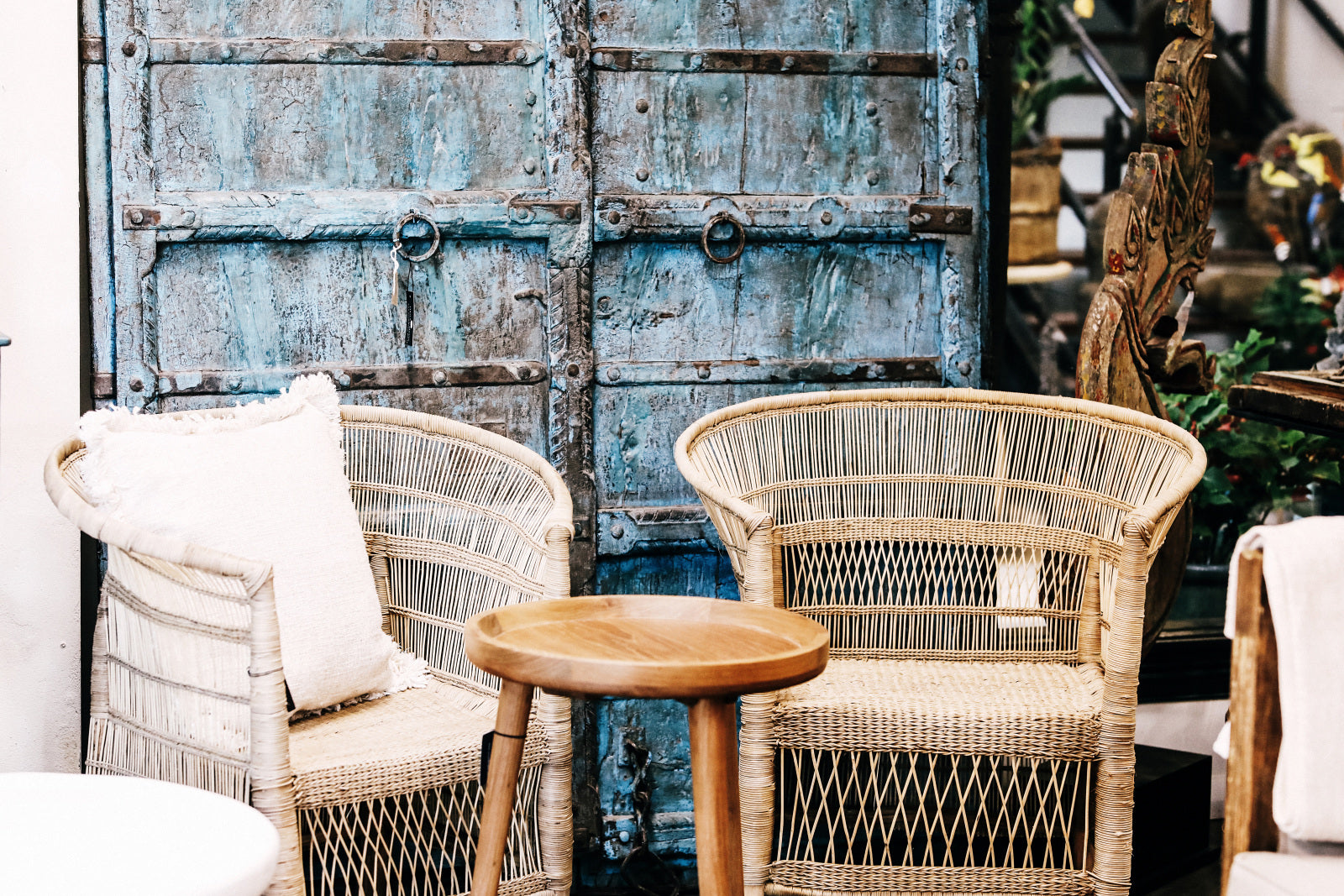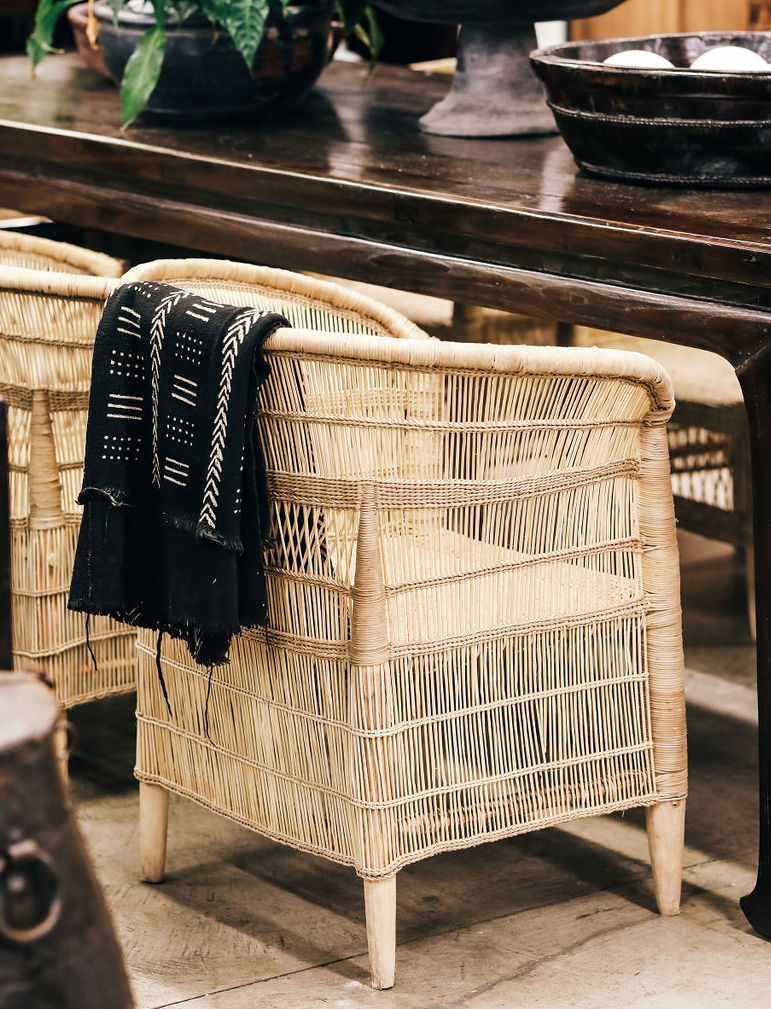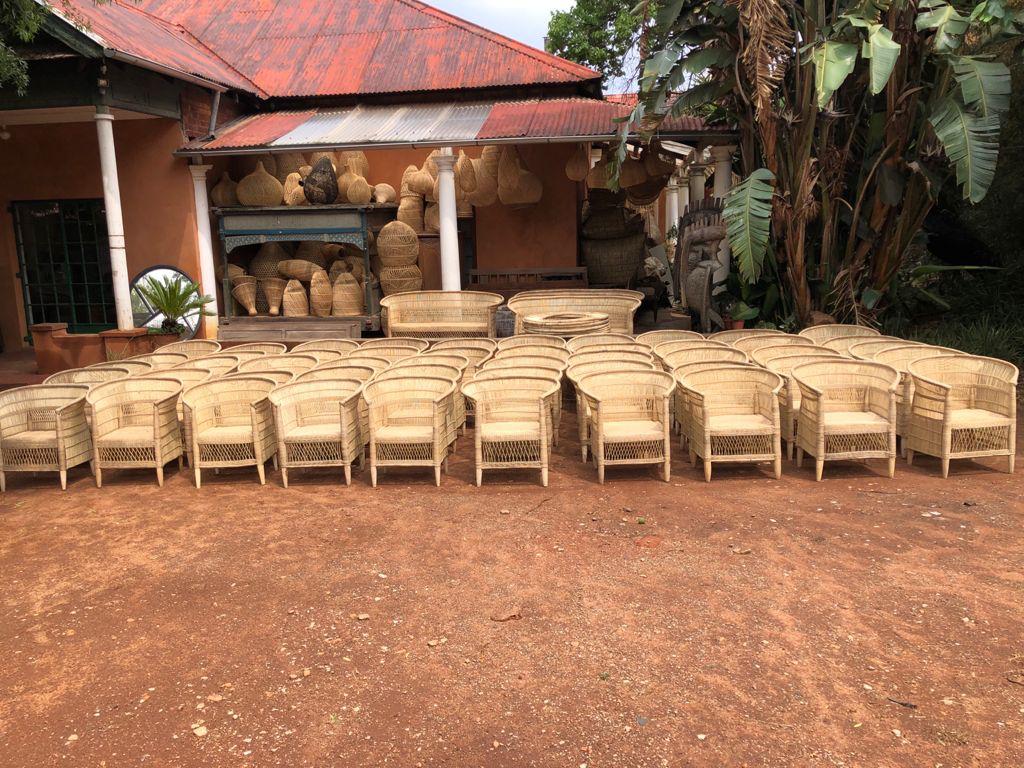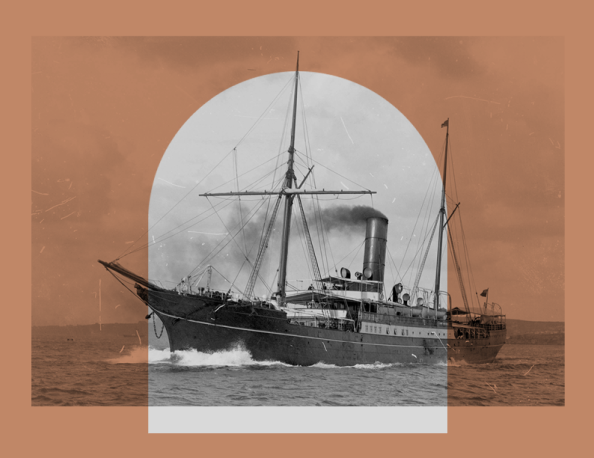The Malawi Chairs

Are you sitting comfortably?
It’s a very curious story. Of how a simple chair has brought about a positive change to the lives of locals living in an impoverished area in southern Malawi.
Going back in time, Malawi was settled around the 10th century by migrating Bantu groups. Much later it was colonised by the British and eventually gained independence in 1966. Known as the “warm heart of Africa” because of the warmth and friendliness of the people, the Republic of Malawi is a landlocked country. It’s also currently one of the world’s least developed countries.
In the late 70’s, a plan was devised in southern Malawi for small scale farmers to form a local co-operative in an effort to provide local artisans with the opportunity to gain a sustainable income cane weaving while preserving their cultural heritage. It wasn’t long before the unique Malawi chair surfaced, made an impact and totally reset the tone for casual seating comfort.

The chair from the lake
Down Lake Malawi way, the local Malawians typically live with their extended families in huts that are grouped together in villages. That wonderful spirit of cooperation enables family members to share both work and natural resources. And what better example of this, is the making of the Malawi chair. The beauty of the chair is that each one is handmade, one piece at a time with traditional knotting rather than tacs staples and glue, which means that no two chairs are ever exactly alike.
The natural order of things
Being small-scale farmers, the local co-operative, weave their Malawi chairs outside the planting and harvesting season. They only use local materials in the form of cane reeds and local blue gum timber. The African cane reds are harvested and dried in the hot sun. It then takes around 10 days for the two natural elements of cane and timber to be crafted together to become one uniquely crafted Malawi chair.

How the Malawi chair comes together
The local Malawi craftsmen and women begin the chair journey by hand-carving and building a frame from the wood of a blue gum tree. It’s a locally available wood which is often used for construction and joinery, renowned for its strength and reliability.
They then insert strips of dried willow and water reeds which gives the Malawi chairs that unique pattern and extra comfort. The willow and water reeds are so flexible and strong that the artisans are able to tie knots without the use of glue.
To create a curved barrel back, the locals have become very enterprising by utilising more recent manufactured objects to help shape the designs. The curved back of the chairs are often made using spare bicycle wheels or car parts as temporary frames to help guide the willow branches and reeds into place. Once the woven Malawi chair is complete, the artisan leaves his or her signature underneath.

Unique in every way
The Malawi chair is that understated piece that has a calling; it says “come sit here and relax.” Meticulously crafted by hand by Malawi artisans, it’s designed to be strong and sturdy as well as being simple and beautifully elegant.
It also has brought with it more tangible benefits. Each chair provides Malawi artisans with an opportunity of a sustainable income to support their families while giving them the opportunity to preserve their cultural heritage in the handicraft of cane weaving.
If you would like to see what makes hand crafted Malawi chairs so unique, come and see our collection at Orient House. They do have a presence all their own.
* Featured image by @tamarindbeach






